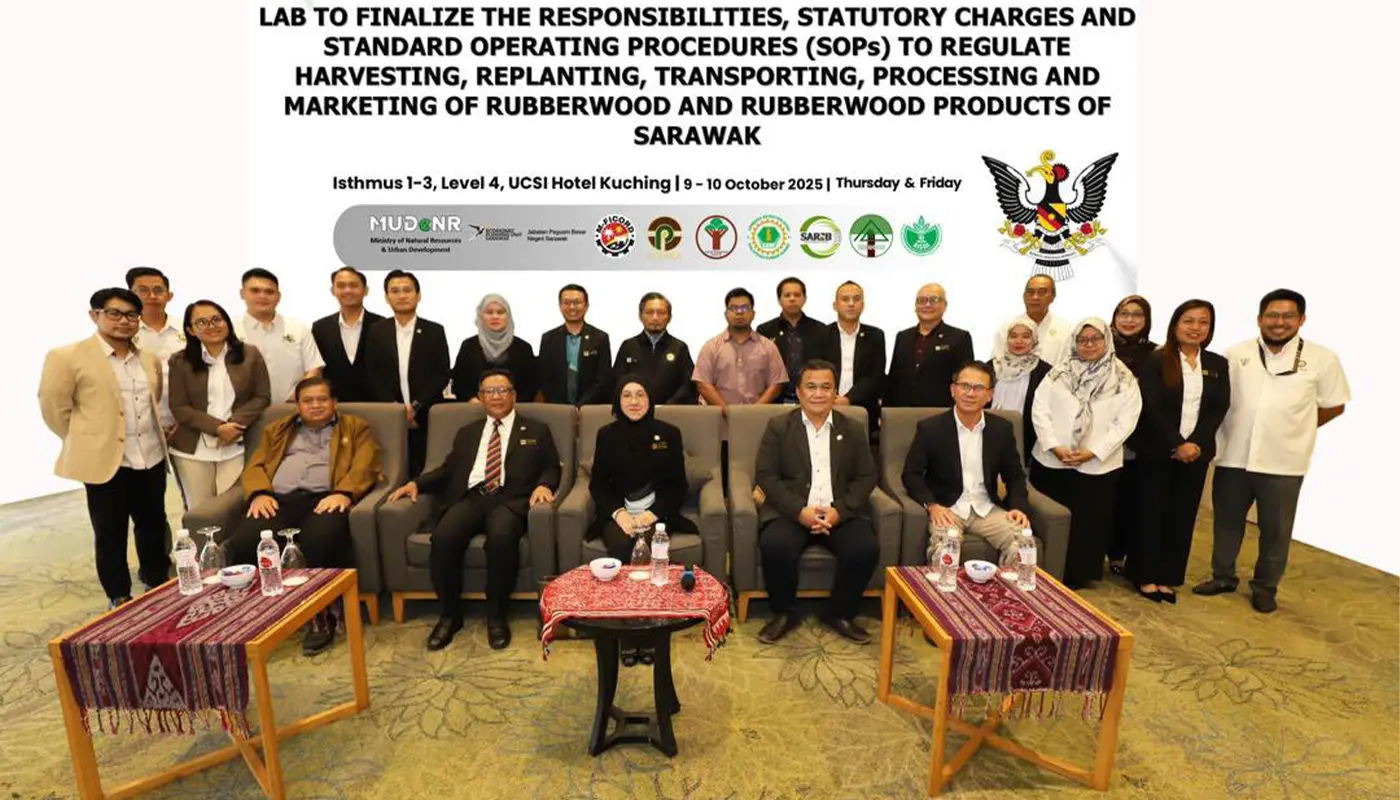KUCHING – Sarawak is laying out a comprehensive regulatory roadmap for its rubberwood sector, aiming to harness significant economic potential in harvesting, transport, processing and marketing of rubberwood products.
A two-day laboratory workshop, organised by the Sarawak Timber Industry Development Corporation (STIDC), saw forty officers representing major governmental bodies, including the Ministry of Natural Resources and Urban Development (MUDeNR), Sarawak Rubber Industry Board (SARIB), and the Malaysian Rubber Board (LGM), finalise proposed standard operating procedures (SOPs) and regulations.
According to STIDC studies conducted in 2023, rubberwood is widely grown in Sarawak, covering about 94,000 hectares, mostly by smallholders.
The densest cluster lies within a 100-kilometre radius of Betong, spanning some 50,000 hectares, with an estimated five million cubic metres of standing volume.
Rubber trees that are no longer viable for latex production may offer a sustainable source of raw material. The proposed regulatory framework envisions turning this resource into value-added downstream products such as engineered wood and furniture, rather than leaving the timber sector reliant on raw exports.
The lab concluded with a consensus on the need for coordinated action among regulatory agencies to clearly delineate responsibilities, statutory fees, and the chain of custody across the supply chain.
MUDeNR affirmed its commitment to certify that all rubberwood products from Sarawak comply with local and international standards.
Under the plan, Sarawak Timber Legality Verification System (STLVS) will be central to meeting the upcoming EU Deforestation Regulation (EUDR), helping rubberwood and related products gain acceptance in key export markets including the EU, Japan, Australia, Korea and India.
This initiative aligns with the state’s Post-COVID-19 Development Strategy (PCDS2030), which targets RM8 billion in annual export revenue from timber and non-timber forest products by 2030. The strategy emphasises shifting from raw product exports to higher value-added timber goods.





